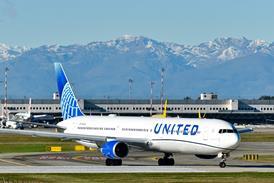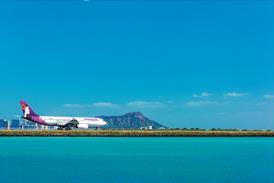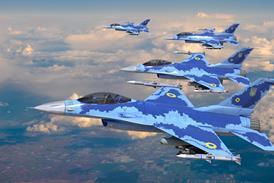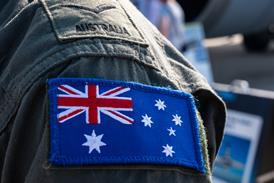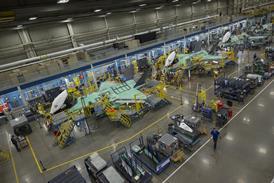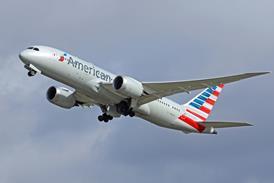Joint winners: Dan Tellep and Norm Augustine
Positions: Chairman and President
Organisation: Lockheed Martin
THE US DEFENCE industry has seen some spectacular consolidation over the past five years, but none more dramatic than the merger of Lockheed and Martin Marietta to form the giant Lockheed Martin corporation.
The merger, which was finally sealed in March 1995, left the new group standing head and shoulders above its nearest defence competitors, and with revenues of $23 billion has a good claim to being the largest aerospace grouping in the world.
It is difficult to overstate the impact that the merger has already had on the world industry, setting a new benchmark for the kind of scale which companies need to achieve to compete as international players.
This year's award for Aerospace Personality of the Year, goes jointly to the two men who had the vision to make the merger happen, Dan Tellep and Norm Augustine.
Despite their contrasting, though complementary, styles, both men have been long-standing advocates of creating a strong, consolidated US defence industry. A glance at their track records illustrates the point.
Tellep joined Lockheed's space and missiles division in 1955, shortly after graduating from Berkeley University with a degree in mechanical engineering. He worked his way up through the space business before joining the Lockheed board in 1987 and taking the top job as chairman two years later.
He was instrumental in refocusing Lockheed around its core defence business. What emerged was a highly profitable business with a formidable reputation for efficiency and technical success. The group became one of only a handful of world-class military aircraft manufacturers, with products ranging from the C-130 transport through to the advanced stealth technology of the F-22.
Lockheed grabbed an early chance for consolidation when General Dynamics began to bail out of aerospace in the early 1990s. Lockheed acquired the highly successful Fort Worth F-16 line, completing its range of fighter aircraft.
Augustine, too, started out as an engineer, leaving Princeton University with an aeronautical engineering degree in 1957. He worked in several of the leading US aerospace and defence groups, before joining the US Department of Defense, finally serving as Under Secretary of the Army. In 1977 he left to join Martin Marietta, and a decade later emerged as the group's chairman.
He went on to lead the group's rapid rise up the league table of US defence aerospace corporations, helped by a series of major acquisitions. Martin Marietta also benefited from GD's selling spree by picking up its space business, and then went on to pull off the $3 billion acquisition of General Electric's aerospace division - at the time one of the industry's largest deals.
Augustine remained convinced that Martin Marietta needed to achieve greater critical mass and, in early 1994, negotiated the purchase of Grumman. Northrop, however, entered the fray with a rival offer and Augustine backed off rather than engage in a potentially expensive bidding war.
That strategic withdrawal led, albeit indirectly, to the deal of the decade. Tellep put through his now famous telephone call to Augustine suggesting that they should talk. The rest is history.
The success of the Lockheed Martin merger does not simply rest on the size of the combined business, but on the ability to use that scale to reap the benefits of post-merger rationalisation, increased financial strength and greater technological leverage.
Augustine and Tellep again have a strong track record on managing this post-merger consolidation. Martin Marietta estimates savings of $1.5 billion from the GE Aerospace acquisition and $300 million from the GD space business. Likewise, Lockheed has made savings of around $250 million after taking Fort Worth into the group.
The aim is to make savings of $1.8 billion from the Lockheed Martin merger and to generate $3-4 billion in cash flow. After its first year, the enlarged group appears on track. Excluding merger costs, net profit for 1995 climbed above $1 billion and free cash was not far behind. As Augustine points out, the corporation's shareholders have already benefited from the merger with a 75% growth in value over the year.
Neither has the consolidation finished. In January, Lockheed Martin again surprised the world with an agreement to buy the bulk of Loral's defence aerospace business for around $9 billion. That will once again put the group into a league of its own, with sales of $30 billion. The question facing the rest of the world aerospace industry is: "How do we catch up?"
There can be no doubt that the two individuals who had the greatest impact on the aerospace industry in 1995 were Dan Tellep and Norm Augustine: for that, they are justifiably named jointly as the Flight International Aerospace Personality of the Year.
Joint winners: Dan Tellep and Norm Augustine
Source: Flight International

